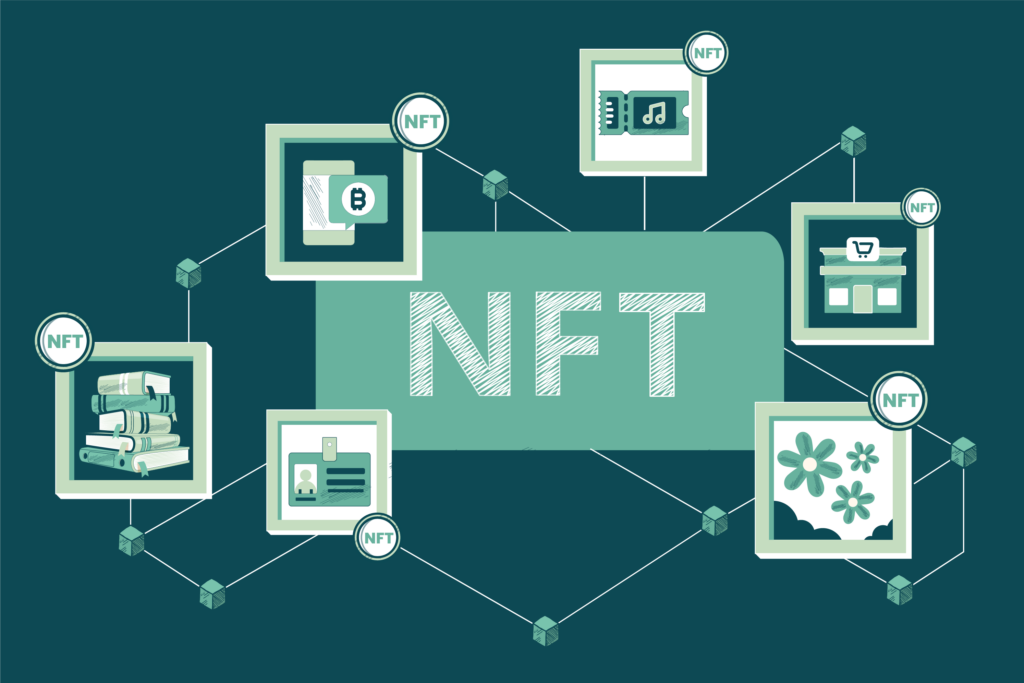NFTs have changed the digital art scene, but what few people know about them is the impact these devices have on the environment. Like any electronic resource that requires constant access to the Internet and energy, these Non-Functional Tokens also emit carbon and greenhouse gases into the environment. The acceleration of ocean acidification and the resurgence of global warming are some of the problems that the energy consumption of these technologies has on nature.
Mining for a year cryptocurrencies (cipher used in buying and selling NFTs) like Ethereum and Bitcoin can have annual energy consumption greater than that of a small country like Argentina, a Cambridge University study published in 2021 pointed out. To better understand how this technology impacts the environment, see below for five problems of these non-fungible tokens on nature and climate.
1. Releases too much carbon into the environment

Any electronic device that requires constant access to the Internet and light releases carbon into the environment. This is because global energy production is still heavily dependent on non-renewable sources such as coal and natural gas. With NFTs, this is no different. To mine the cryptocurrencies involved in the transactions of these tokens, powerful computers and machines must be kept constantly running.
To get an idea, Ethereum, the main currency used by NFT outlets can use up to 48-kilowatt hours per transaction made. This is equivalent to the monthly consumption of 30 minutes per day of a showerhead with about 3500W of power – a figure that, when you consider that the cryptocurrency market makes more than a thousand transactions per day, can be worrisome.
In general, to keep the cryptocurrency market (and NFTs) running, several machines are needed that are constantly connected. The more servers connected to a polluting energy network, the greater the damage it causes to the environment. When we consider the growing global consumption of cryptocurrencies, this exponentially increases the overall CO2 emission in the world.
2. Involves high water costs

More than just non-renewable sources, some countries – such as Brazil, for example – have a large part of their energy matrix made up of hydroelectric plants. This type of source transforms the energy existing in river currents into kinetic energy, which is the energy caused by the force of a movement. This movement of water moves the turbines of the hydroelectric plants – which then power a generator to produce light.
The problem with this way of producing energy is that the movement of the turbines heats the water, and this causes part of it to evaporate. In addition, the hot water is dumped into the ocean, which kills the marine life nearby and also causes problems with the flora and fauna near the rivers.
Cryptocurrencies and NFTs enter this bill when, by demanding a huge network of computers consuming the energy produced by a hydroelectric power plant, this movement directly encourages this evaporation of water. This is because these servers need a lot of energy, which places high demands on the power plants that produce them.
3. Increases the rapid acidification of the oceans

The pH is a scale from one to 14 used to check whether certain substances are acidic or not. Numbers below seven are considered acidic, while those above are considered basic. The acidification process of the oceans occurs precisely when the seawater begins to have an acidic character – that is, the pH level begins to decrease.
The problem is that this acidification is not caused by nature. It started during the industrial revolution when industries started emitting polluting gases into the atmosphere. This is the case with the carbon emitted by Internet networks connected to non-renewable energy sources, for example.
Today, cryptocurrency mining promotes the pH drop in H2O molecules because the energy used to power the computer networks mostly comes from polluting sources. The carbon emissions from mining reach the air, which is dissolved in the oceans, reacts with the water, and then considerably lowers the pH levels until it becomes acidic. This acidity can exterminate the fauna and flora of the places most affected by it, impacting, in a chain, the entire ecosystem of the planet.
4. It has growing energy consumption

The mining of cryptocurrencies, used in NFT transactions, is made to require increasing amounts of energy. This is because its operation increases its complexity in crescendo, demanding more and more power from the machines involved.
Mining means logging on the Blockchain, a technology that functions as “a book” of records of cryptocurrency financial transactions. These transactions, in turn, are done in puzzles, which are nothing more than mathematical problems. The computer solves these problems randomly. So the more powerful your machine is, the more easily it solves these problems – and the more mining it generates as well.
Only after solving the proof of work can the record of the block found be made valid on the Blockchain. When this registration happens, the miner is paid for his work. The problem lies in the difficulty of these problems, which increases as their resolution is made. The more difficult it is to register a puzzle, the more time and power (and, consequently, more energy) are demanded from the computers.
5. It can intensify global warming

Global warming is an environmental phenomenon characterized by an increase in the average temperature of the planet Earth. In general, it happens naturally, but some human practices intensify this process – such as the emission of pollutant gases into the atmosphere.
With the carbon emissions caused by cryptocurrency mining, the gas rises through the atmosphere and contributes to the greenhouse effect – which, in addition to contributing to global warming, also increases the acidification of the oceans. CO2 emissions released into the air directly stimulate the intensification of global warming, increasing the average temperature of the planet more rapidly.
This process, when done unnaturally, has a chain reaction in the global ecosystem. It can generate not only wildfires, but also melting polar ice caps, soil desertification, and rising sea levels, all of which impact animal, plant, and other living systems.
Are there ways for NFTs to be sustainable?

Although the companies involved are testing options, – such as Ethereum 2.0, for example – to date there is no definitive and completely efficient method to minimize and/or eradicate the damage of cryptocurrency mining. However, it is possible to adopt some alternatives that can help reduce the problems caused by these technologies.
The most common and achievable for any country is specific taxation for energy consumption in mining. In this way, the country’s energy companies would need to issue an additional tax rate for every investor who had large computer networks dedicated to mining. Thus, with the high cost of energy consumption for this specific purpose, the number of mining farms could drop.
Another way is an investment in sustainable altcoins – that is, cryptocurrencies that use renewable energy, such as solar and wind power. Some examples of this are Litecoin, Dogecoin, and Solarcoin. There are also other digital currencies that, while not using renewable energy as a source, provide puzzles that affect the environment to a lesser extent, as is the case with Ethereum.
This post may contain affiliate links, which means that I may receive a commission if you make a purchase using these links. As an Amazon Associate, I earn from qualifying purchases.

